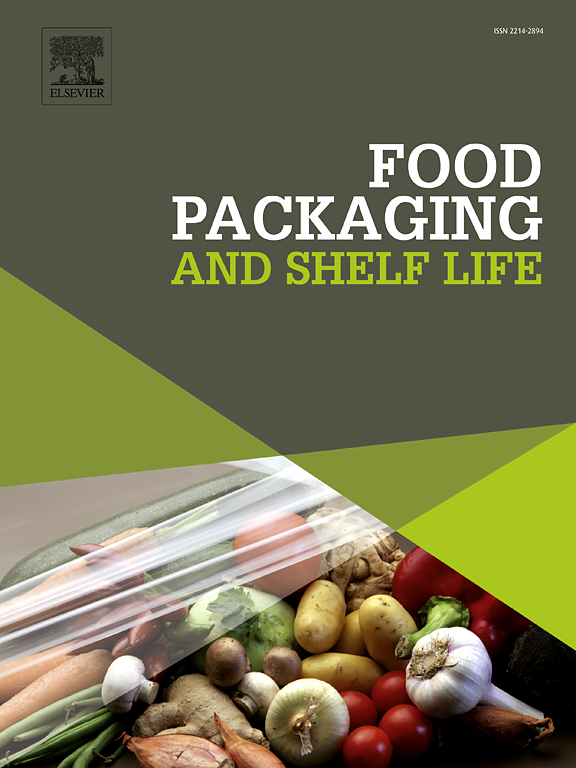Construction and properties of bacterial cellulose/chitosan microgel films loaded with ε-polylysine and its application on Tilapia preservation
IF 8.5
1区 农林科学
Q1 FOOD SCIENCE & TECHNOLOGY
引用次数: 0
Abstract
The extensive application of non-biodegradable plastics has engendered substantial environmental predicaments. Consequently, it is feasible to develop natural bio-based composite packaging materials endowed with extraordinary functional properties by integrating biopolymers with diverse characteristics. Hence, we propose an environmentally friendly and efficient methodology for fabricating antibacterial and biodegradable composite microgel films by employing bacterial cellulose (BC) and chitosan (CS) as the composite matrix, sodium tetraborate as the crosslinking agent, and ε-polylysine (PL) as the active substance. We investigated the impact of CS with molecular weights (Mw) of 50 kDa and 300 kDa on the properties of the composite microgel films (PL-m-BC/CSn) and composite blend films (PL/BC/CSn). The films were analyzed via FTIR, SEM, XRD, and TGA. The results indicated the formation of a cross-linked network structure within the microgels, along with strong hydrogen bonding interactions between the film matrices. This entailed a decrease in the amorphous structure of the microgel films and an enhancement in thermal stability. Particularly, the PL-m-BC/CS30 film, with CS having a Mw of 300 kDa, exhibited optimal mechanical and barrier properties, with a tensile strength of 34.69 MPa and an elongation at break of 76.69 %. Additionally, this film significantly extended the shelf life of chilled tilapia fillets.
负载ε-聚赖氨酸的细菌纤维素/壳聚糖微凝胶膜的构建、性能及其在罗非鱼保鲜中的应用
不可生物降解塑料的广泛应用造成了严重的环境困境。因此,整合多种特性的生物聚合物,开发具有非凡功能性能的天然生物基复合包装材料是可行的。因此,我们提出了一种以细菌纤维素(BC)和壳聚糖(CS)为复合基质,四硼酸钠为交联剂,ε-聚赖氨酸(PL)为活性物质制备抗菌和可生物降解复合微凝胶膜的环保高效方法。研究了分子量为50 kDa和300 kDa的CS对复合微凝胶膜(PL-m-BC/CSn)和复合共混膜(PL/BC/CSn)性能的影响。通过FTIR、SEM、XRD、TGA对膜进行分析。结果表明,微凝胶内部形成交联的网状结构,膜基质之间存在强氢键相互作用。这导致了微凝胶膜的非晶结构的减少和热稳定性的增强。特别是当CS的分子量为300 kDa时,PL-m-BC/CS30薄膜具有最佳的力学和阻隔性能,拉伸强度为34.69 MPa,断裂伸长率为76.69 %。此外,该薄膜显著延长了冷藏罗非鱼鱼片的保质期。
本文章由计算机程序翻译,如有差异,请以英文原文为准。
求助全文
约1分钟内获得全文
求助全文
来源期刊

Food Packaging and Shelf Life
Agricultural and Biological Sciences-Food Science
CiteScore
14.00
自引率
8.80%
发文量
214
审稿时长
70 days
期刊介绍:
Food packaging is crucial for preserving food integrity throughout the distribution chain. It safeguards against contamination by physical, chemical, and biological agents, ensuring the safety and quality of processed foods. The evolution of novel food packaging, including modified atmosphere and active packaging, has extended shelf life, enhancing convenience for consumers. Shelf life, the duration a perishable item remains suitable for sale, use, or consumption, is intricately linked with food packaging, emphasizing its role in maintaining product quality and safety.
 求助内容:
求助内容: 应助结果提醒方式:
应助结果提醒方式:


